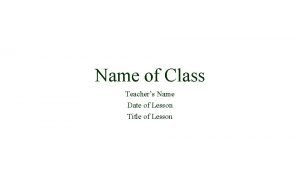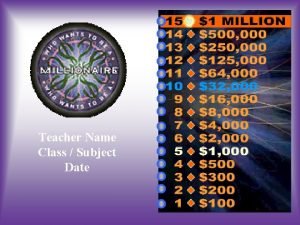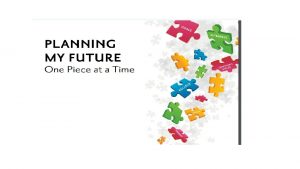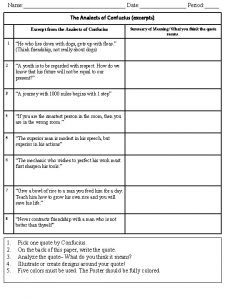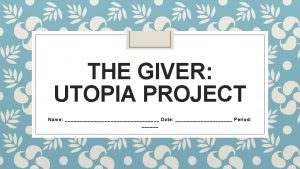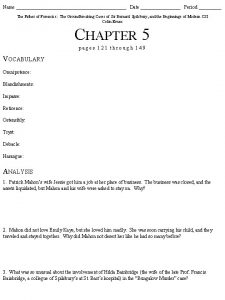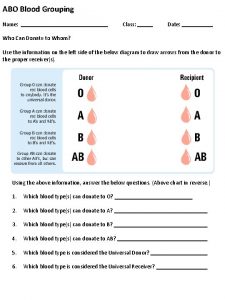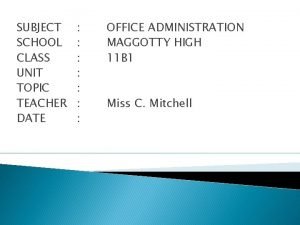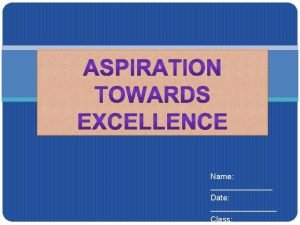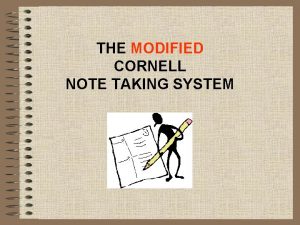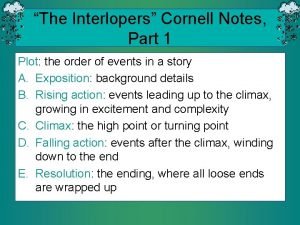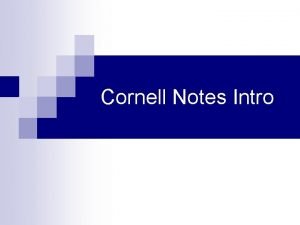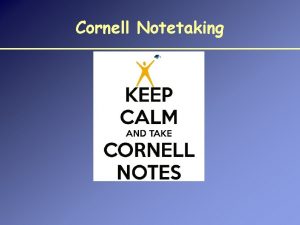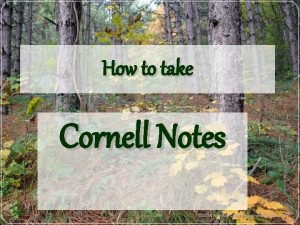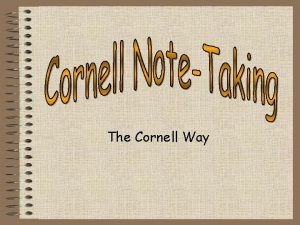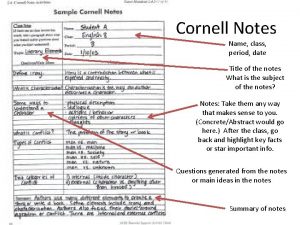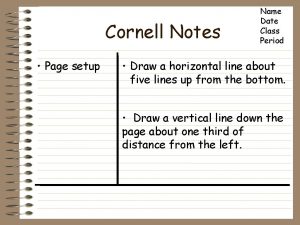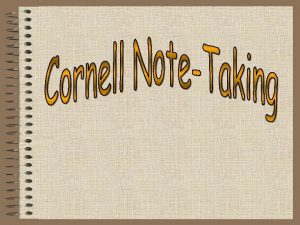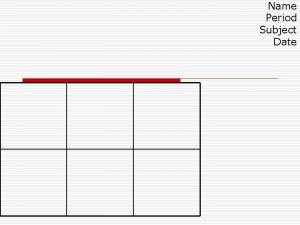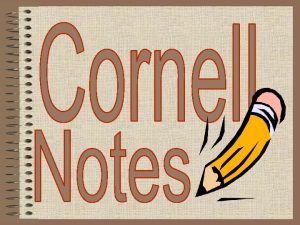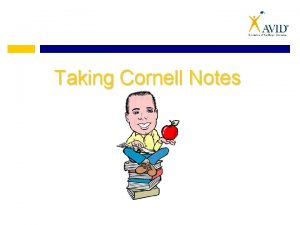Cornell Notes Name Class Period Date Class of













- Slides: 13


Cornell Notes Name Class Period Date Class of 2015 • Write your name, class, period, date, and in the upper right hand corner (see above). • Write the topic of the notes (ex. WWII, Cells, Nouns, etc. ) on the top line (see above).

Cornell Notes • Page setup Name Class Period Date Class of 2015 • Draw a horizontal line about five lines up from the bottom. • Draw a vertical line down the page about one third of distance from the left.

Cornell Notes • • Main Idea • • Key Question • (after notes • Key words & ideas Important dates/people/places Repeated/Stressed Info Ideas/brainstorming written on are board / overhead projector completed) • Info from textbook/stories • Diagrams & Pictures • Formulas

Cornell Notetaking When should you take notes? • Notes are a record of your learning, so take them when: þ þ You listen to a lecture You read a text You watch a film You work in a group on an activity þ You need to recall information about what happened to you in a class, meeting, or activity--which means always!

Cornell Notetaking What types of questions should I place on the left side? • Questions which are answered in the notes on the right • Questions you still need the answer to--ask a friend or the teacher after class • Questions the teacher might ask on a test • Higher level thinking questions

Cornell Notetaking What else could I place on the left side? • Key terms, vocabulary words, or dates • Diagrams or figures • Reference pages in a text • Steps in a solution process • Notes to myself about actions I need to take

Cornell Notetaking What are some good tips for taking the notes on the right? • Write only what is most important: þ listen for repetition, change in pace or volume, numbering, explicit clues (“this is important, ” or “on the test”); þ watch for gestures, or clues to organization; þ look for material being written down by instructor or shared in a visual manner

Cornell Notetaking What are some good tips for taking the notes on the right? • Write in your own words (paraphrase) • Write using abbreviations (check a dictionary for these and create your own) • Draw a figure or diagram • Leave space where you think you might need to “fill in” info later • Use bullets, arrows, and indenting to list key ideas • Write legibly

SAMPLE For English • What is a noun? • What are the two types of nouns? • What is a compound noun? Name Class Period Date Class of 2015 • Noun - person, place, thing, idea • Types - concrete & abstract • concrete - taste, touch, smell, see • abstract - ideas (emotions) • compound - two or more words combined to create one thing; ex: fireman, bedroom

Cornell Notes • Helpful Hints for Straight A Notes Name Class Period Date Class of 2015 • Abbrev. , Paraphrase. • Use symbols (arrows, circles, underlining) or highlighting to emphasize important ideas and relationships. • Skip lines between ideas. • Within 24 hours, review notes and develop study questions on the left side. • Be aware of teacher clues. *

Teacher Clues • How do I know if what the teacher says is important? • Repetition or stressed inflection • Voice gets louder/softer or faster/slower • Writing on the board or overhead • “This will be on the test. ” • Gestures (hand/arm movements) • “This is important. ”

So, what about the bottom of my paper? What belongs in the bottom space? • Summary - review notes as soon as possible after class and write a summary in your own words about the main ideas. Are there any gaps in your understanding? (see next point) • Questions for the teacher. • Doodles - down here they won’t get in the way of the important stuff. Summary, questions, doodles
